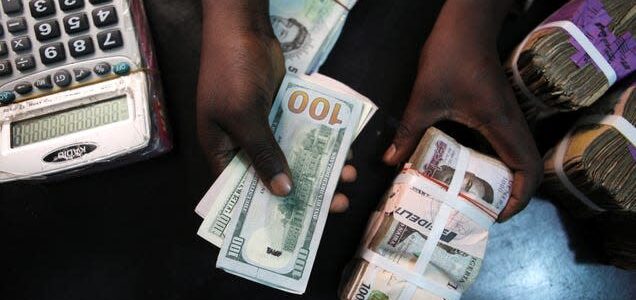
The naira fell by 17.91 per cent to N951.22/$ on the official Investor and Exporter forex window on Wednesday.
This was as the dollar supply fell by 4.94 per cent to $135.58m from $142.63m.

Data from FMDQ Securities Exchange revealed that the naira lost N144.49 against the dollar after closing trading on Tuesday at N806.73/$.
The naira opened trading at N828.33/$ on the day before hitting a high of N1159.10/$ and low of N701.00/$. It eventually closed trading at N951.22/$. Total dollar turnover on Wednesday was $135.58m.

The naira’s volatility in the market continued despite efforts by the Central Bank of Nigeria to stabilise the national currency.
The PUNCH recently reported that Nigeria’s foreign exchange reserves fell by $1.6bn to $32.97bn since the CBN tried to unify the country’s foreign exchange rates, putting pressure on the naira.
In its recent Africa Outlook report, the Economist Intelligence Unit, said, “In Nigeria, an unsupportive monetary policy implies that the naira will remain under pressure, while the central bank lacks the firepower to adequately supply the market or clear a backlog of foreign exchange orders, which will keep foreign investors unnerved.
“High inflation and a continued spread with the parallel market will leave the exchange rate regime unstable and result in periodic devaluations.”
Recently, the CBN Governor, Olayemi Cardoso, lamented that fiscal deficits and public debt increases had piled pressure on the external reserves and contributed to exchange rate instability.
Speaking at the recent Chartered Institute of Bankers of Nigeria 58th Annual Bankers’ Dinner and Grand Finale of the Institute’s 60th Anniversary, the governor said, “We have already witnessed improvements in FX market liquidity in recent weeks, as the market responded positively to tranche payments which have been made to 31 banks to clear the backlog of FX forward obligations.
“We have been subjecting these payments to detailed verification to ensure only valid transactions are honored. In a properly functioning market, it is reasonable to expect significant FX liquidity, with daily trade potentially exceeding $1.0bn. We envision that, with discipline and focused commitment, foreign exchange reserves can be rebuilt to comparable levels with similar economies.”
Credit: Punch
